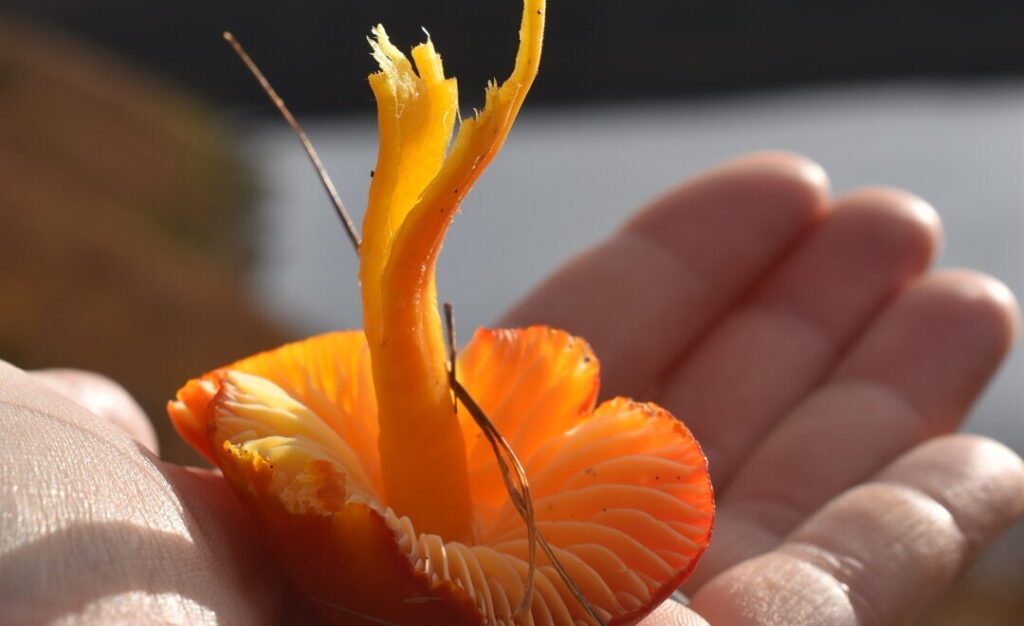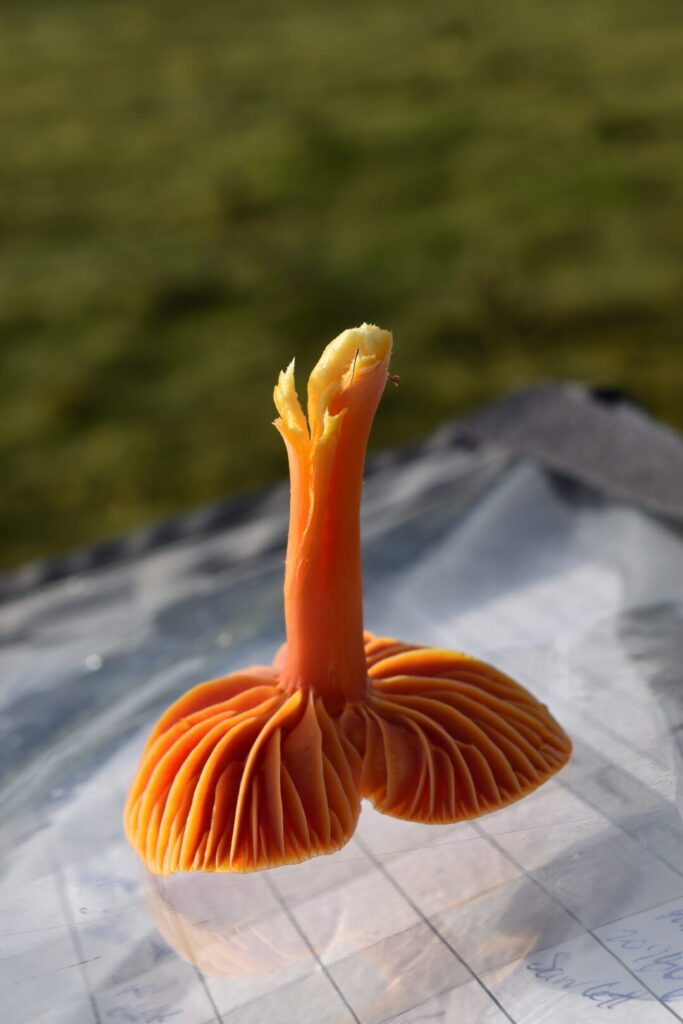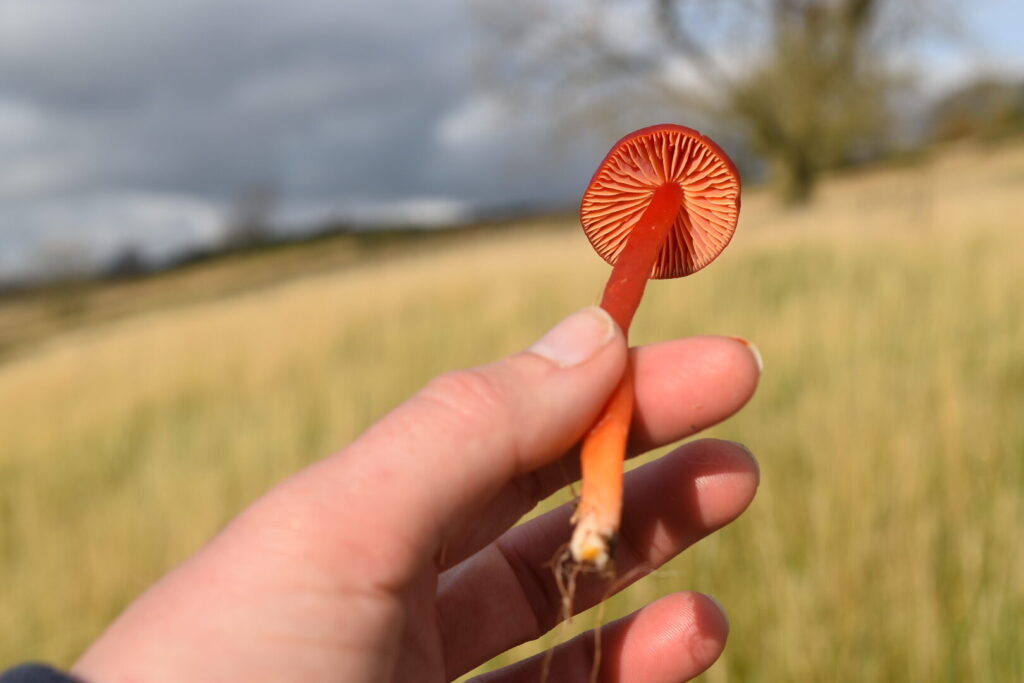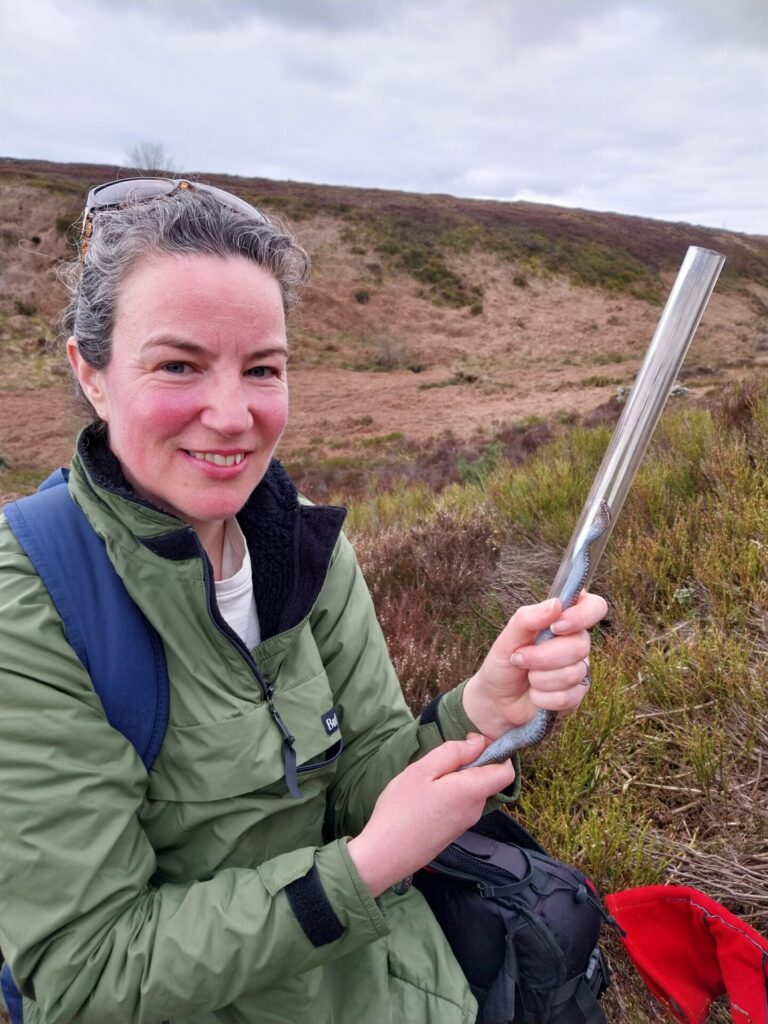Join the hunt for Nidderdale’s technicolour waxcap fungi
Published on 6th October 2025

Nidderdale National Landscape (NNL) is launching a public fungi hunt this autumn, asking residents and visitors to record sightings of colourful waxcap fungi using a free survey app.
The eye-catching mushrooms, which grow in shades of pink, yellow, green and crimson, are indicators of rare ancient grassland that has never been ploughed or artificially fertilised. Free training sessions begin on 16th October, and anyone can take part, with or without fungi knowledge.
“Waxcaps really show off – they’re amazingly colourful and look magical set against the green grass, they’re really pretty,” said Dr Kelly Harmar, Nidderdale National Landscape’s biodiversity officer. “But they’re more than just beautiful; Waxcaps are indicators of ancient grassland – land that hasn’t been ploughed, fertilised artificially or treated with pesticides,” she said. “They’re telling us something important about these special places and we’d love people to help us with collecting this important data.
“The UK is especially important for waxcaps in Europe because of its wet climate, and northern uplands like Nidderdale are among the richest places to find them. Waxcap season runs from late September through to mid-November, when the first frosts arrive. The project is designed so anyone can take part without expert knowledge.
Using the free Plantlife WaxcApp survey app (available from the App Store or Google Play), people can simply record how many colours of fungi they can see in a grassland. This scores the site and flags it for expert surveyors to revisit.
“Walkers might notice them along public footpaths, and we’re particularly keen for landowners to look out for them – they could find they’re sitting on something rare and wonderful,” Kelly explained.
Waxcaps can grow in many places; farmland, churchyards, cricket pitches, village greens and even gardens. They thrive in old grassland that has been without trees for a long time, has never been ploughed and has been managed without artificial fertiliser or pesticides.
Sites usually need short turf in autumn, often on slopes that are well-drained and less likely to have been agriculturally improved. Threats include ploughing, artificial inputs, and tree planting, as fungi associated with trees can crowd out grassland fungi.
Training sessions begin on 16th October, run by the North and East Yorkshire Ecological Data Centre (NEYEDC). Claire Bending, of NEYEDC said: “Waxcaps are an important part of our grassland heritage, but they are often overlooked because they appear later in the year.
By collecting simple colour records through the app, local people can help us build a much clearer picture of where these special fungi are found,” she said. “That information is vital — it guides expert surveyors, supports land managers and helps us protect sites from changes that could threaten them. We’re delighted to be working with Nidderdale National Landscape to raise awareness and involve more people in this project.”
This project is funded by Farming in Protected Landscapes (FiPL), a government-funded scheme supporting farmers and land managers in protected landscapes. It is led by NEYEDC – the Local Environmental Record Centre for the region. NEYEDC is running the training, finding and scoping sites and providing expert surveyor support from grassland mycologist Steve Hindle. Nidderdale National Landscape is helping to scope sites and seek landowner permissions.
Similar projects are underway in other parts of Yorkshire, including the Howardian Hills National Landscape. The project aims to raise awareness of the beauty and importance of waxcap grassland, increase knowledge of where waxcaps are found and protect sites from management changes or development. To book a free place for the training, visit https://neyedc.org.uk. Plantlife’s Waxcap Watch website also offers national resources and identification guides.
Gallery



